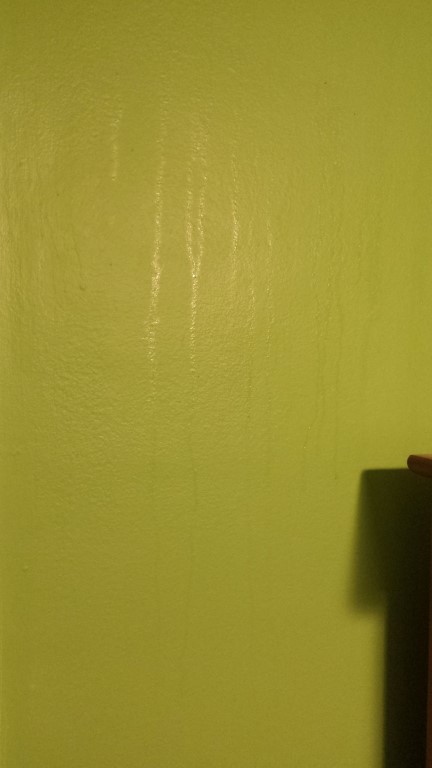The bedroom at the back of my house (North facing) has what I would describe as persistent water "trails" on the inside surface. They are faint, but noticeable. The "trails" run from the ceiling, and are basically found on the entire wall.
I do not think the wall is insulated. To my knowledge, it is double-brick, finished with plaster and lath.
I am wondering what could be causing these and how to remedy?
I first thought they were surface stains, but they did not wipe away. I then thought they must be condensation, since the effect seems more pronounced in the winter. But it's only on the one wall (not on other walls of same room, or any other walls in house), so now I am not so sure.
I have seen these "trails" for a couple of years now, and recently noticed they seem more tacky. So I am now thinking the actual cause may be water seeping into the wall behind the paint.
The problem is, I cannot find any source of water into my home that might explain this. On a recent rainy day I checked both the outside of this same wall, and the attic space above - I did not see any obvious evidence of water problems anywhere.
Detail of a section of water "trails" (just left of bookcase in 1st photo)




